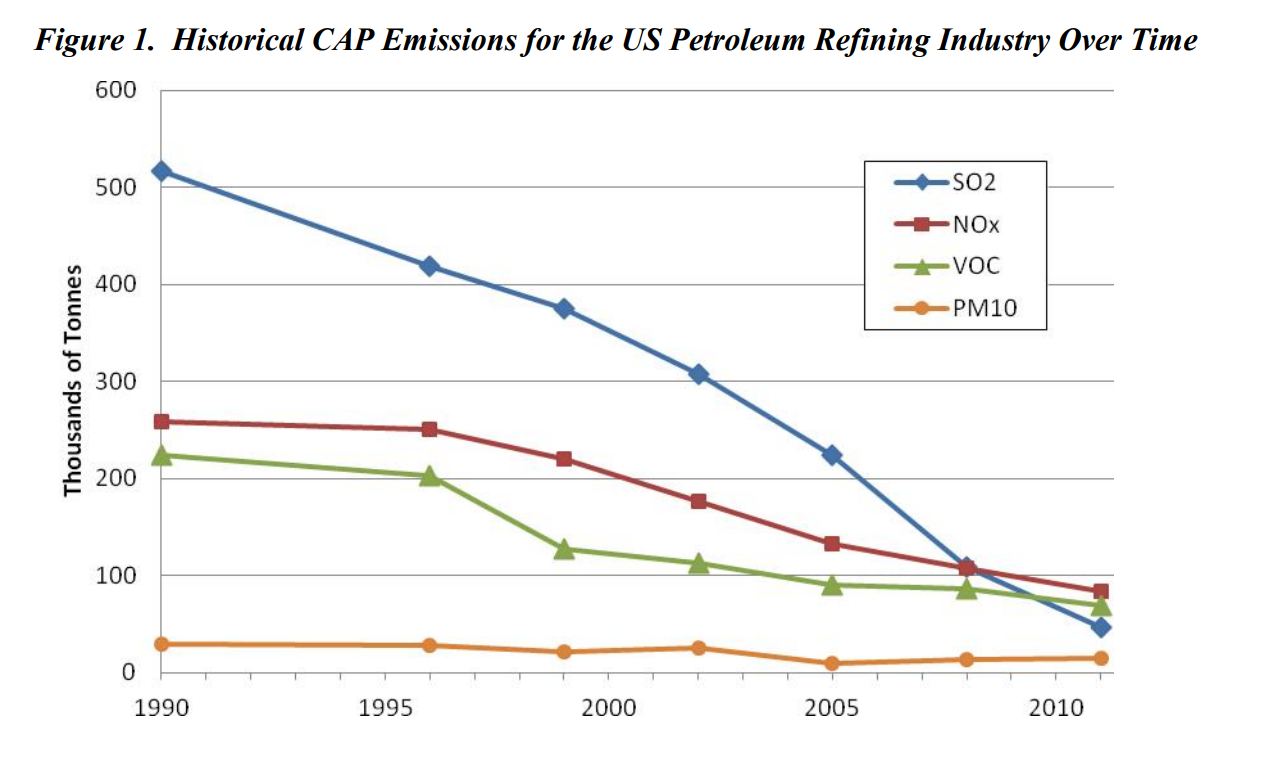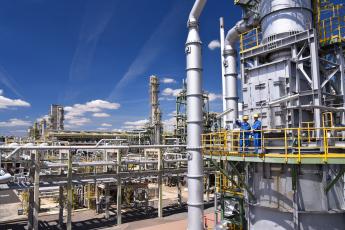Nothing is more important than the health and safety of our people and our communities—the communities where our employees live, work and go to school.
Fenceline monitoring is used at our facilities to aid in the early detection of emissions, including benzene. The data helps us immediately correct problems and nearly all refining facilities quickly return to below action levels after initial problematic reads.
Fenceline monitoring is an informative tool, but it’s not a conclusive tool. EPA intended the data to assist facilities in measuring potential leaks and assuring emission sources on-site are effectively controlled.
The devices used to collect monitoring data do not reveal the source of emissions. Instead, they show concentrations of emissions at specific points and their readings are impacted by other nearby facilities, vehicles, airports, weather, and wind. Because the data can be so easily misinterpreted, it was never intended to be used as a measure of community exposure or health risks.
Beyond addressing emissions from refining operations, AFPM members work closely within their communities to help identify other emissions sources so any external problems can be swiftly addressed. These other sources — some of which are listed above — contribute to the surrounding air quality and benzene levels measured at refinery perimeters.

AFPM members have invested billions of dollars to reduce emissions — improving marine vessel loading operations, installing different building features designed to capture benzene emissions, and making use of additional monitoring technologies to track and eliminate other potential emission sources. We have worked with the EPA Office of Air Quality Planning and Standards for decades to support the development of the Clean Air Act residual risk program, to provide characterization clarity around the refinery source categories for hazardous air pollutant regulations, and on a variety of New Source Performance Standards (NSPS).
Our facility emissions for hazardous air pollutants fell 66 percent from 1990 to 2013. And for the six criteria pollutants, refinery emissions are down nearly 75 percent today compared to 1970, even as U.S. refining capacity reached all-time highs. As responsible community members and corporate neighbors, we are committed to building on this progress.
What Does the EPA Say About Fenceline Monitoring? [EPA.gov]
"The benzene action level is not an ambient air standard. The fenceline monitors are not intended to provide a measure of benzene levels in the community. There is no correlation between the benzene action level and any health-based benzene or other hazardous air pollutant exposure standard. The benzene action level does not correlate to a benzene emissions level that presents a risk to the public. EPA did not establish the fenceline monitoring program as a risk reduction step under the Clean Air Act section 112(f)(2). Rather, the fenceline monitoring requirements are a development of practices that will provide additional information on the status of emission sources for refineries and the public. It is also important to note that the fenceline monitoring program is not an appropriate tool for monitoring and assessing emergency releases since the data from the monitors are not immediately available.
The fenceline monitors are not limited to measuring emissions from only refineries. The passive diffusive tubes may collect benzene from nearby sources that refineries do not manage, such as neighboring facilities, roadways, airports, marine ports, and from environmental events (e.g., smoke from forest fires). External emissions sources may contribute to elevated background readings that are measured by a refinery’s fenceline monitors. Consequently, while this monitoring program is a reasonable means for a refinery to oversee its emission sources, there may be situations where the monitors identify benzene emissions that do not originate from the refinery."
For more information on EPA’s fenceline monitoring program, benzene limits and an explanation of collected data visit AFPM’s resource page on environment and air regulations.


